Diagnose
Gesetzlicher Schutz und Rote Liste
Rote Liste Deutschland: ungefährdet
Merkmale
Die Färbung der Larven variiert in Abhängigkeit von den vorherrschenden Farben in ihrer Umgebung (Noor et al. 2008; Eacock et al. 2019).
Verbreitung
Von Europa durch Sibirien bis Ostasien und Nordamerika (GBIF).
Lebensweise
Die Larven leben poylphag an den Blättern von Laubbäumen, insbesondere an Weidengewächsen (Salicaceae) und Buchenartigen (Fagales), aber es gibt auch wiederholt Nachweise an Gemeinem Beifuß (Artemisia vulgaris).
Lebensräume
Bestandssituation
Literatur
- Clarke, C. A., G. S. Mani & G. Wynne 1985: Evolution in reverse: clean air and the peppered moth. – Biological Journal of the Linnean Society 26 (2): 189–199.
- Cook, L. M. 2003: The Rise and Fall of the Form of the Peppered Moth. – The Quarterly Review of Biology 78 (4): 399–417.
- Cook, L. M., B. S. Grant, I. J. Saccheri & J. Mallet 2012: Selective bird predation on the peppered moth: the last experiment of Michael Majerus. – Biology Letters 8 (4): 609–612.
- Coyne, J. A. 1998: Not Black and White. Review of Melanism: Evolution in Action by Michael E. N. Majerus. – Nature 396 (6706): 35–36.
- Coyne, J. 2002: Evolution under pressure. Review of Judith Hooper: "Of Moths and Men: Intrigue, Tragedy and the Peppered Moth". – Nature 418 (6893): 19–20.
- Eacock, A., H. M. Rowland, A. E. van’t Hof, C. J. Yung, N. Edmonds & I. J. Saccheri 2019: Adaptive colour change and background choice behaviour in peppered moth caterpillars is mediated by extraocular photoreception. – Communications Biology 2: 286.
- Grant, B. S., M. E. N. Majerus 1999: Fine tuning the peppered moth paradigm. – Evolution 53 (3): 980–984.
- Grant, B. S. 2002: Sour Grapes of Wrath. – Science 297 (5583): 940–941.
- Grant, B. S. 2004: Allelic melanism in American and British peppered moths. – Journal of Heredity 95 (2): 97–102.
- Grant, B. S. 2021: Observing Evolution – Peppered Moths and the Discovery of Parallel Melanism. – Johns Hopkins University Press. 320 S.
- Hooper, J. 2002: Of Moths and Men. – Norton, 377 S.
- Kettlewell, H. B. D. 1955: Selection experiments in industrial melanism in the Lepidoptera. – Heredity 9: 323–342.
- Kettlewell, H. B. D. 1958: A survey of the frequencies of Biston betularia (L.) (Lep.) and its melanic forms in Great Britain. – Heredity 12 (1): 51–72.
- Majerus, M. E. N. 1998: Melanism: Evolution in Action. –Oxford University Press. 338 S.
- Majerus, M. 2008: Non-morph specific predation of peppered moths (Biston betularia) by bats. Ecological Entomology. – Royal Entomological Society 33 (5): 679–683.
- Majerus, M. E.N. 2009: Industrial Melanism in the Peppered Moth, Biston betularia: An Excellent Teaching Example of Darwinian Evolution in Action. – Evolution: Education and Outreach 2: 63–74.
- Noor, M. A. F., R. S. Parnell & B. S. Grant 2008: A Reversible Color Polyphenism in American Peppered Moth (Biston betularia cognataria) Caterpillars. – PLoS ONE 3(9): e3142.
- Riley, P. A. 2013: A proposed selective mechanism based on metal chelation in industrial melanic moths. – Biological Journal of the Linnean Society 109 (2): 298–301.
- Rudge, D. W. 2005: Did Kettlewell Commit Fraud? Re-examining the Evidence. – Public Understanding of Science. 14 (3): 249–268.
- Saccheri, I. J., F. Rousset, P. C. Watts, P. M. Brakefield & L. M. Cook 2008: Selection and gene flow on a diminishing cline of melanic peppered moths. – Proceedings of the National Academy of Sciences 105 (42): 16212–16217.
- Steward, R. C. 1977: Industrial and non-industrial melanism in the peppered moth Biston betularia (L.). – Ecological Entomology 2 (3): 231–243.
- van’t Hof, A. E., N. Edmonds, M. Dalíková, F. Marec & I. J. Saccheri 2011: Industrial Melanism in British Peppered Moths Has a Singular and Recent Mutational Origin. – Science 332 (6032): 958–960.
- van't Hof, A. E., P. Campagne, D. J. Rigden, C. J. Yung, J. Lingley, M. A. Quail, N. Hall, A. Darby & I. Saccheri 2016: The industrial melanism mutation in British peppered moths is a transposable element. – Nature. 534 (7605): 102–117.
Links
Autor(-en): Matthias Nuß. Letzte Änderung am 23.09.2021
|
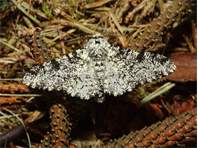
Neufang, Thüringen, Juli 2022
(© Michael Happ)
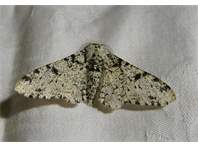
Birkenspanner am 10.06.2011 in Radebeul-Zitzschewig nachts am Licht
(© Eva-Maria Bäßler)
Birkenspanner am 10.06.2011 in Radebeul-Zitzschewig nachts am Licht (© Eva-Maria Bäßler)( Bild vergrößern)
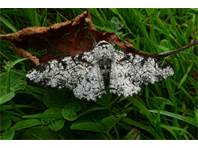
OT Kühnhaide, Hartmannsdorf bei Chemnitz, 15.07.2021
(© Joachim Röder)
OT Kühnhaide, Hartmannsdorf bei Chemnitz, 15.07.2021 (© Joachim Röder)( Bild vergrößern)
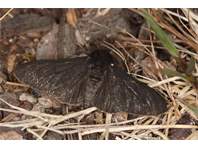
f. carbonaria, Westlausitz, Pulsnitz, sw. Schwedenstein, 17. Juni 2021
(© Gert Schulze)
f. carbonaria, Westlausitz, Pulsnitz, sw. Schwedenstein, 17. Juni 2021 (© Gert Schulze)( Bild vergrößern)
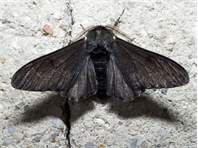
Hoyerswerda, 06.07.2021, f. carbonaria
(© Martina Görner)
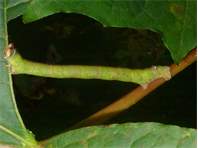
Larve des Birkenspanners im Oktober 2014 im LSG Hüttertal bei Radeberg
(© Tilmann Adler)
Larve des Birkenspanners im Oktober 2014 im LSG Hüttertal bei Radeberg (© Tilmann Adler)( Bild vergrößern)
%20is.jpeg)
Grumbach/Erzgebirge, 22. Juni 2023 (am Morgen danach...)
(© Rainer Klemm)
Grumbach/Erzgebirge, 22. Juni 2023 (am Morgen danach...) (© Rainer Klemm)( Bild vergrößern)
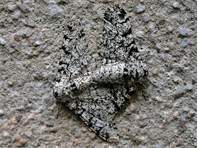
Hoyerswerda - Wojerecy, Landkreis Bautzen, Juni 2023
(© Martina Görner)
Hoyerswerda - Wojerecy, Landkreis Bautzen, Juni 2023 (© Martina Görner)( Bild vergrößern)
.jpeg)
Larve an Beifuß ( Artemisia). Bei Grumbach, 02.09.2016
(© Rainer Klemm)
Larve an Beifuß ( Artemisia). Bei Grumbach, 02.09.2016 (© Rainer Klemm)( Bild vergrößern)
.jpeg)
Larve an Beifuß ( Artemisia). Bei Grumbach, 08.09.2016
(© Rainer Klemm)
Larve an Beifuß ( Artemisia). Bei Grumbach, 08.09.2016 (© Rainer Klemm)( Bild vergrößern)
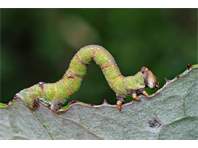
Tharandter Wald, am Triebischsee, 06.09.2019
(© Lothar Brümmer)
Tharandter Wald, am Triebischsee, 06.09.2019 (© Lothar Brümmer)( Bild vergrößern)
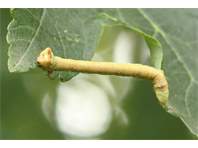
Belgershain, 08.09.2019
(© Helene Otto)
|